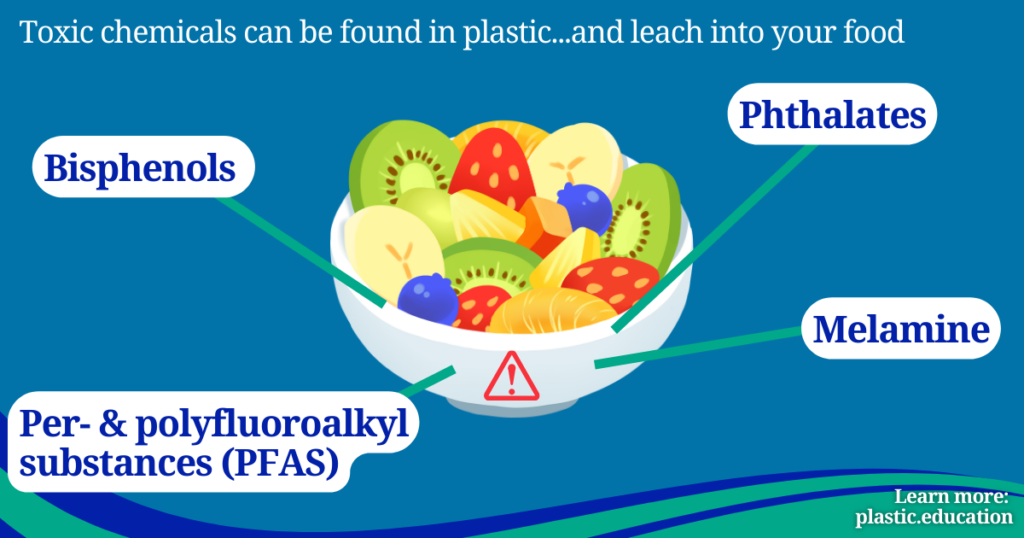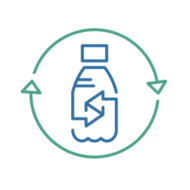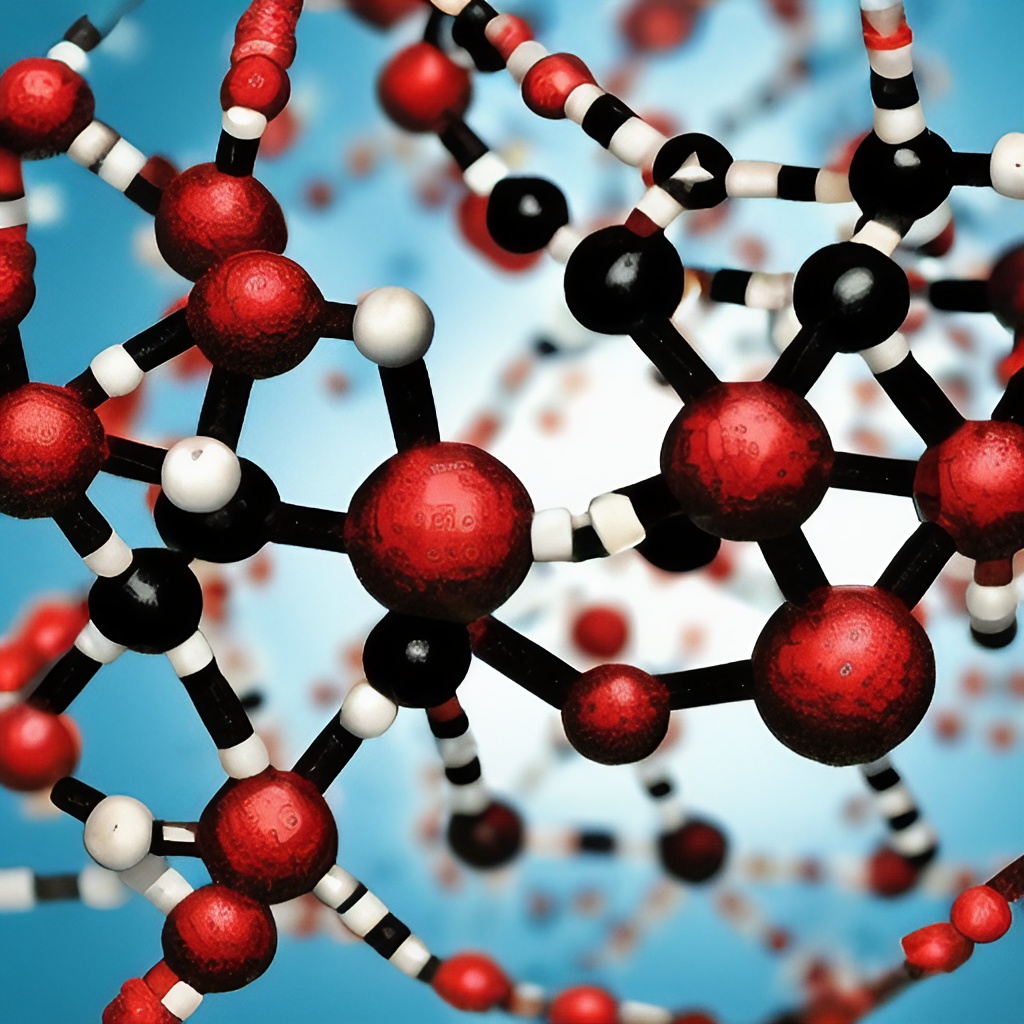
Bisphenols
Bisphenols are a class of industrial chemical compounds that have been used in manufacturing products since the 1960s. They are commonly found in plastics like polycarbonates, epoxy resins and other polymers, as well as food and beverage containers, cash register receipts, the lining of water pipes, some dental composites and dental sealants.
Bisphenols can leach into food and beverages and have been linked to certain health problems. For this reason bisphenols have come under increased scrutiny by regulatory agencies so that consumers can be better informed about the presence of bisphenols in what they buy and consume and how it may impact their health.
Bisphenol A (BPA)
Bisphenol A, also known as BPA, is a chemical found in everyday household products such as canned food linings, plastic containers, and even children’s thermoses. Due to its prevalence in many products and potential endocrine-disrupting properties — those that can interrupt the normal functioning of the body’s hormones — researchers have taken great interest in studying Bisphenol A.
To date, it has been implicated in causing a range of reproductive defects and cancers. Although research results are still inconclusive on BPA’s effects on human health, especially at lower exposure levels, people remain cautious and concerned about the long-term implications of this chemical.
Bisphenol S (BPS)
Bisphenol S (BPS) is a synthetic bisphenol compound primarily used as a flame retardant in plastics and electrical components. BPS, first synthesized in 1936, was introduced as an alternative to Bisphenol A (BPA) due to increasing concerns over the potential health and environmental effects of BPA exposure.
Like BPA, BPS is also an endocrine disruptor – meaning it has the potential to interfere with the body’s hormonal functions. For instance, studies indicate reproductive toxicity at low doses and combined effects with other Bisphenols show that BPS may be actually even more dangerous than bisphenol A when it comes to endocrine disruption.
Phthalates
Phthalates are a family of chemicals that are used in thousands of household products to increase their durability and flexibility. They can be found in items such as plastic packaging for food, cosmetics, furniture, and vinyl flooring. Phthalates have been linked to health problems such as reproductive issues, cancer, and endocrine disruption. While governments have restricted their use in certain products, they remain widely present in many consumer goods. Therefore, it is important to be aware of which products might contain phthalates and advocate for healthier alternatives.
PFAS
Perfluoroalkyl and Polyfluoroalkyl Substances (PFAS) are a group of man-made chemicals that are part of a larger family of compounds called Phthalates. This group includes a range of substances such as perfluorooctanoic acid (PFOA), perfluorooctane sulfonate (PFOS), and perfluorohexane sulfonate (PFHxS). PFAS are used in a variety of consumer products for their grease, water, and stain resistant properties. Examples include water and stain repellents found in carpets, fabrics, food packaging materials and nonstick cookware. Even though the benefits these substances provide can be quite convenient, it has been discovered that PFAS may have toxic impacts on human health through long-term exposure or higher concentrations in the environment.
Flame Retardants
Flame retardants are substances that are added to certain plastic products in order to reduce their flammability, and therefore reduce the risk of flame spread in the event of a fire. These compounds can be categorized into organohalogens and organophosphates, both of which have been found to cause adverse health effects, including disruption of hormones and increased cancer risk. Although flame retardants are used in an effort to reduce the risk associated with combustible materials, they could potentially pose greater risks than benefits when it comes to human health. Therefore, it is important for consumers to be informed about any flame-retardant chemicals that may be present in the products they enjoy using and make conscious decisions about which ones are best for them.
Organohalogens
Organohalogens are a class of chemicals found in everything from insecticides, jet fuel and laundry detergents. Organohalogens are formed when some carbon-halogen combinations bond together to form a molecule. Organohalogen chemicals can negatively impact human health if consumed in large enough quantities given their highly toxic nature. Organohalogen chemicals have been linked to both cancer, organ diseases and reproductive problems. People therefore need to be aware of the potential risks associated with Organohalogens and be aware of exposure.
Organophosphates
Organophosphates are man-made, synthetic chemical compounds that contain phosphorus, oxygen, and carbon. Organophosphates were first used for their insecticidal properties in the 1940s. Today, they are used as an active ingredient in insecticides, herbicides, and some medicines. Organophosphate molecules can be absorbed through skin exposure or inhalation and may have implications for human health when they accumulate in the body. Studies on humans link exposure to Organophosphates to neurological disorders. There is also evidence of reproductive and organ toxicity linked with Organophosphate use. These health risks make Organophosphates a cause of concern worldwide, leading to their restricted use or complete ban in certain countries.
Melamine
Melamine is an organic compound typically used in the manufacture of several different products. It is most famously known for its incorporation into kitchenware and dinnerware, giving it an extremely durable finish and a glossy shine. Melamine has also been employed in building materials such as insulation, countertops, drywall, paint additives and floor tiles. However, Melamine can be dangerous to human health if ingested in large amounts; because of this, any consumer goods that feature Melamine must comply with strict rules about how much of the chemical can be used to ensure their products are safe for consumers.

